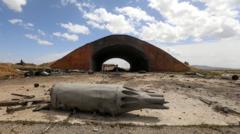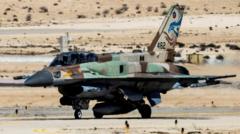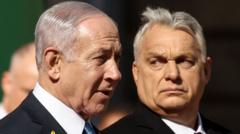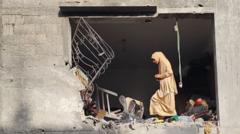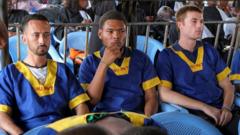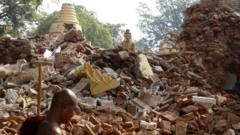This article examines the current state of Hezbollah amidst mounting casualties, community discontent, and reshaped alliances.
**Hezbollah Faces Unprecedented Challenges as It Rethinks Its Future**
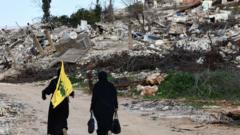
**Hezbollah Faces Unprecedented Challenges as It Rethinks Its Future**
After recent warfare devastates its infrastructure, Hezbollah grapples with internal dissent and external pressures.
Hezbollah, long considered a powerful player in the Middle East, is now at a critical juncture following recent military setbacks that devastated its presence in southern Lebanon. The group's challenges are compounded by significant loss, with thousands wounded and killed in retaliatory strikes by Israel. A nurse, known as Adam, shared harrowing details of an attack where low-tech pagers, designed for communications within Hezbollah, were remotely detonated. Despite being gravely injured, Adam expressed unwavering loyalty to the group, a sentiment echoed by many in the region though mixed with growing concern over its escalating conflict with Israel.
This conflict can be traced back to the well-established animosity between Hezbollah and Israel, rooted in decades of occupation and warfare. The latest violence erupted after Hamas’s assault on Israel, prompting Hezbollah to engage in hostilities by firing rockets into Israeli territory, leading to another fierce Israeli response. The intensity of the conflict has prompted a wave of destruction, particularly in towns like Kfar Kila, which have been left in ruins, causing profound distress among residents such as Alia, who can only identify her home in the debris.
Despite the Hezbollah leadership asserting its commitment to fight against Israel, discontent is prevalent among its base. The Lebanese community is frustrated with the lack of reconstruction funds and the growing demand from both internal and external actors to disarm the group. Following a tumultuous recent election, the newly elected president emphasized the necessity of disarming non-state actors, implicitly targeting Hezbollah, which has historically held significant political sway in Lebanon.
The shifting dynamics in the region have raised questions about Hezbollah’s reliance on Iran for financial and military support. The turmoil instigated by the fall of the Assad regime has disrupted supply lines crucial for Hezbollah's operations. Observers suggest that the Iranian strategy toward Hezbollah may pivot as the collective strength of its allied groups seems weakened.
Internally, there's a notable shift, with whispers of dissent increasingly audible in the ranks. Subtle critiques arise as many supporters now openly question the group’s engagement in the conflict, urging a reassessment of its strategies to avoid further internal destruction and hardship. For those dependent on Hezbollah's assistance, like families of wounded fighters, the future seems precarious, making disarmament a complex issue that could potentially incite internal strife.
Moving forward, the focus remains on how Hezbollah will navigate this turbulence, adapt its strategies, and manage a community that remains both loyal yet increasingly wary of its long-term goals. As the international community closely watches these developments, the road ahead will be fraught with challenges for both Hezbollah and the Lebanese state, adding further complexity to the region's already tangled political landscape.

